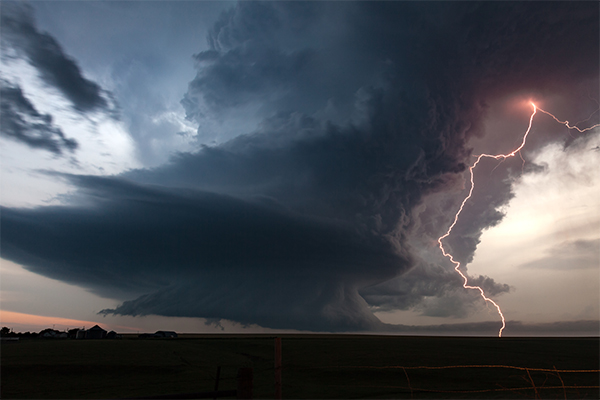Be Prepared for Spring and Summer Severe Weather
The spring and summer months are always great when the weather is warm and sunny, but for many of us we don’t get that beautiful weather every day. During these seasons, as we have already experienced, there are various severe weather storms that can pop up and cause harm and/or damage to your property and vehicles. It is important to make sure you are prepared for this type of weather as things can change quickly, especially in the Midwest.
When severe weather hits the risk of injury and weather-related death increases, so planning makes sense. Spring and summer weather hazards include tornadoes, thunderstorms, lightning, flooding, tsunamis and intense heat. In order to help you make sure you are prepared for any type of weather we have come up with a handful of preparedness items (according to the CDC).
- Have a battery-operated flashlight and a battery-operated NOAA weather radio and extra batteries handy in case you need it during a power outage from a severe thunderstorm. It is important to have a flashlight in your car as well in case you run into trouble at night on the road.
- Prepare an emergency evacuation plan or shelter with your family. Provide a plan for every type of severe weather you may experience with maps and clear routes to safety for each room.
- Make sure to have the following important information handy and readily available:
- Telephone numbers of family and friends
- Insurance and property information
- Telephone numbers of utility companies
- Medical information
- Replenish supplies in your first-aid kit with the following items (according to the American Red Cross):
- Non-latex gloves
- Assortment of adhesive bandages
- Antibiotic ointment
- Sterile gauze pads in assorted sizes
- Absorbent compress dressings
- Tweezers
- Scissors
- Adhesive cloth tape
- Aspirin packets
- A 3-5 day supply of bottled water and non-perishable goods
- Personal hygiene items
- Blankets or sleeping bags. Leave a blanket in the trunk of your car in case you run into trouble while on the road.
On top of being prepared it is important to be aware of general best practices for safety when severe weather does occur. Utilize the list below to ensure that you are practicing as much safety as you can.
- If severe weather is threatening, tune in to local radio or television stations or check local weather reports online.
- If a tornado warning is issued or the weather becomes severe, seek immediate cover in your pre-designated shelter area.
- If you are unable to reach the pre-designated shelter area, take cover in interior rooms with small or no windows such as restrooms, kitchens or hallways on the lowest possible floor.
- Climb under heavy furniture, such as tables and desks, if possible.
- Cover your face and head with blankets, coats, jackets, etc. to protect yourself from flying glass.
- Stay away from windows and doors and do not use the telephone.
- Be prepared to take cover when the following alerts have been issued for our area:
- Severe Thunderstorm Watch—Severe thunderstorms are possible.
- Tornado Watch—Tornadoes are possible.
- Severe Thunderstorm Warning—Severe thunderstorms are occurring.
- Take immediate cover when the following warning has been issued for our area:
- Tornado Warning—A tornado has been sighted or indicated by weather radar.
By following the above guidelines and being prepared for severe weather, you can make sure that you and your family are protected.


